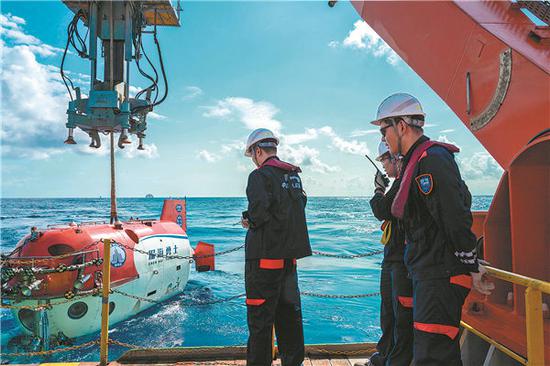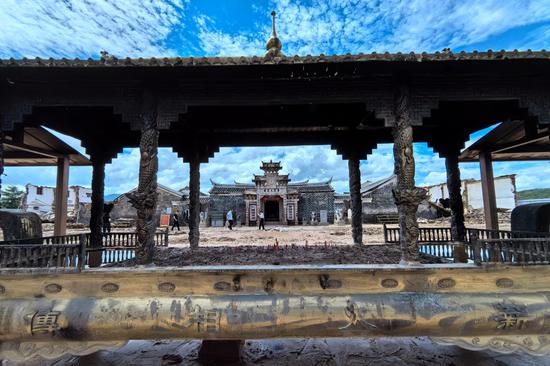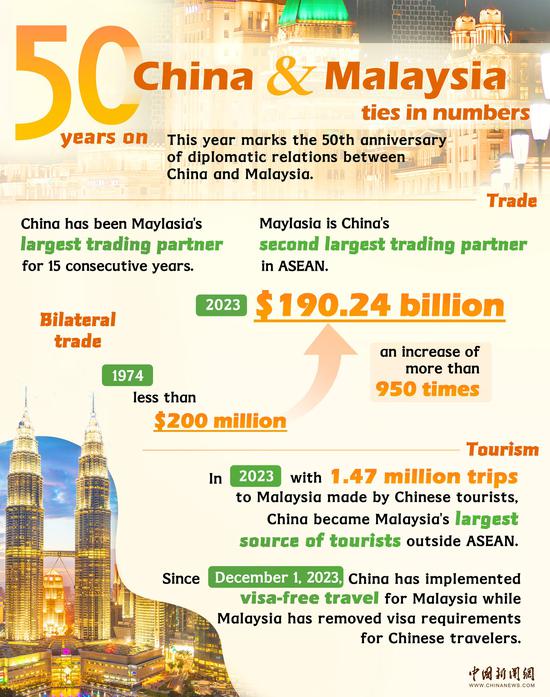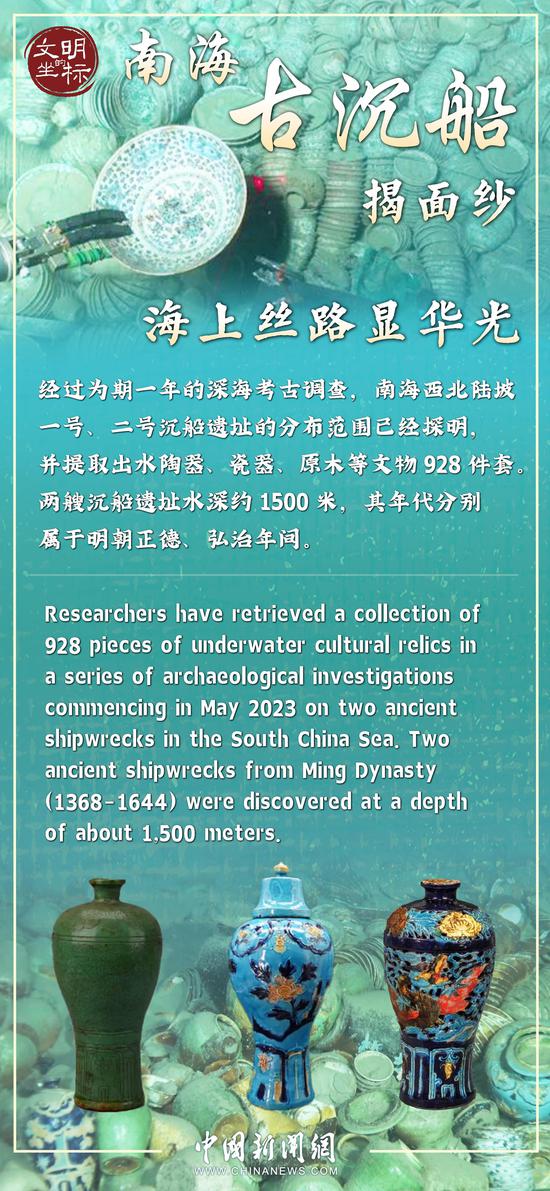
The manned submersible Shenhai Yongshi is deployed during the archaeological expedition. (Photo provided to China Daily)
Crucial findings unveiled
In a series of archaeological investigations that commenced in May 2023 on the two ancient shipwrecks, researchers have retrieved a collection of 928 pieces of cultural relics, with some undergoing a desalination treatment in deionized water. The extensive efforts involve three stages of exploration and 63 dives, the National Cultural Heritage Administration announced during a press conference in China (Hainan) Museum of the South China Sea in Qionghai, Hainan on June 13.
In the exploration of No 1 Shipwreck, the focus has predominantly been on porcelain artifacts, including blue-and-white, celadon and fahua wares. Fahua refers to Chinese porcelain with bold, deep blue decorations and glazes in turquoise, purple, green, yellow and white. While major museums worldwide house fahua wares mostly passed down through generations, archaeological findings of such wares have been rare, making their discovery in the shipwreck a first. To date, several fahua wares, including jars and prunus vases, have been retrieved from the sunken vessel.
The discovery of fahua wares in No 1 Shipwreck validates their exportation from Jingdezhen, Jiangxi province — recognized as China's "porcelain capital" — as commodities during the mid-Ming Dynasty, according to Li. He further noted that this discovery not only illuminates the quest for associated production kiln sites but also provides concrete evidence to elucidate the origins of fahua wares in foreign regions.
The third phase of exploration, conducted in May and June, achieved a significant breakthrough by establishing a chronology through the finding of a red-and-green-colored bowl dated to 1506.The year, marking the commencement of Emperor Zhengde's reign in the mid-Ming Dynasty, solidifies earlier assessments that No 1 Shipwreck originates from the Zhengde era (1506-21).
"This precise dating connects the shipwreck to a specific year, improving our comprehension of its historical significance," said Song.
He noted that No 1 Shipwreck carried a load of porcelain, presumably earmarked for export to Southeast Asia. In contrast, the second shipwreck was found to have been transporting mainly timber homeward from overseas.
"This marks the world's initial discovery of ancient merchant vessels in the same area, believed to be privately owned merchant ships," Song said.


















































 京公网安备 11010202009201号
京公网安备 11010202009201号